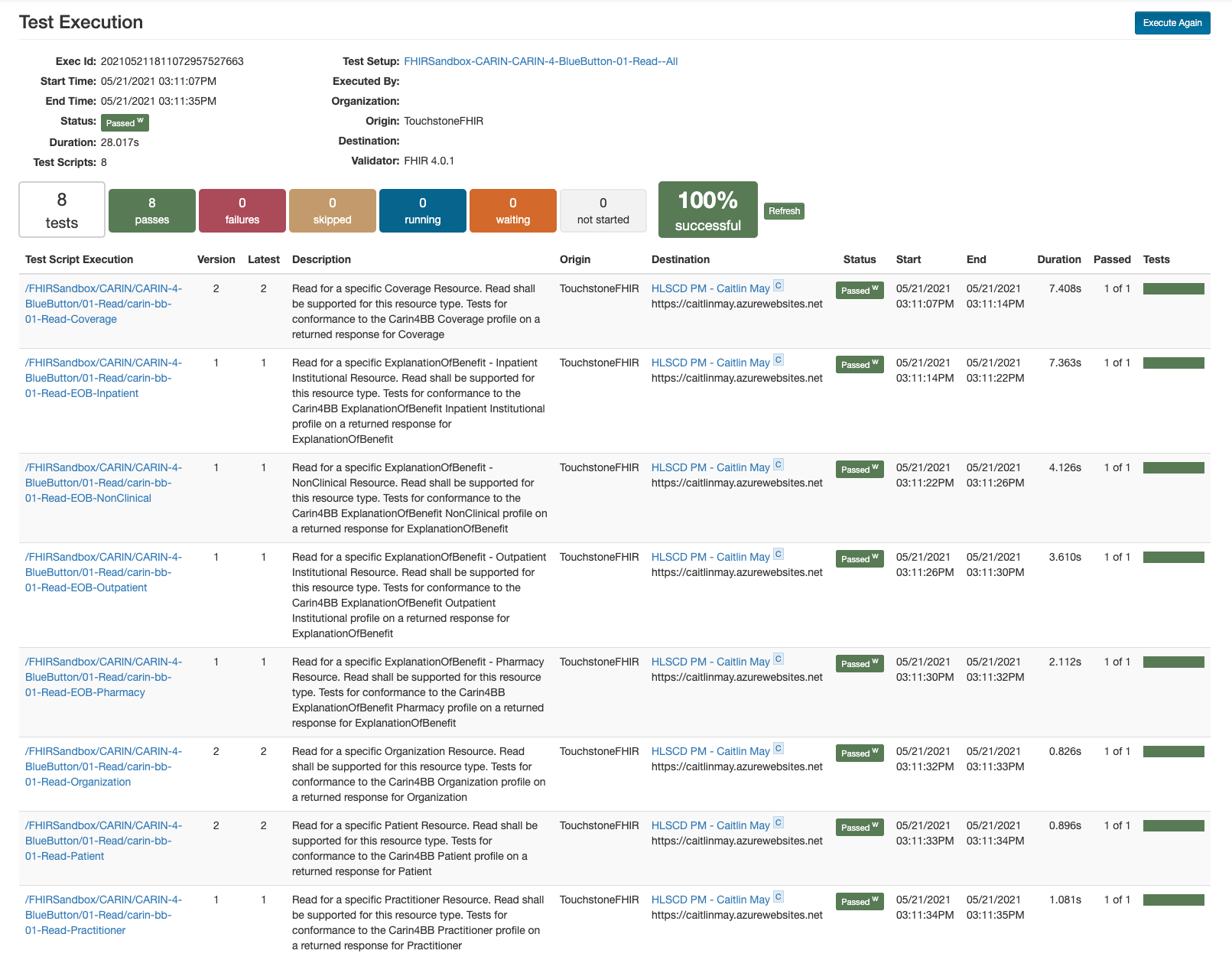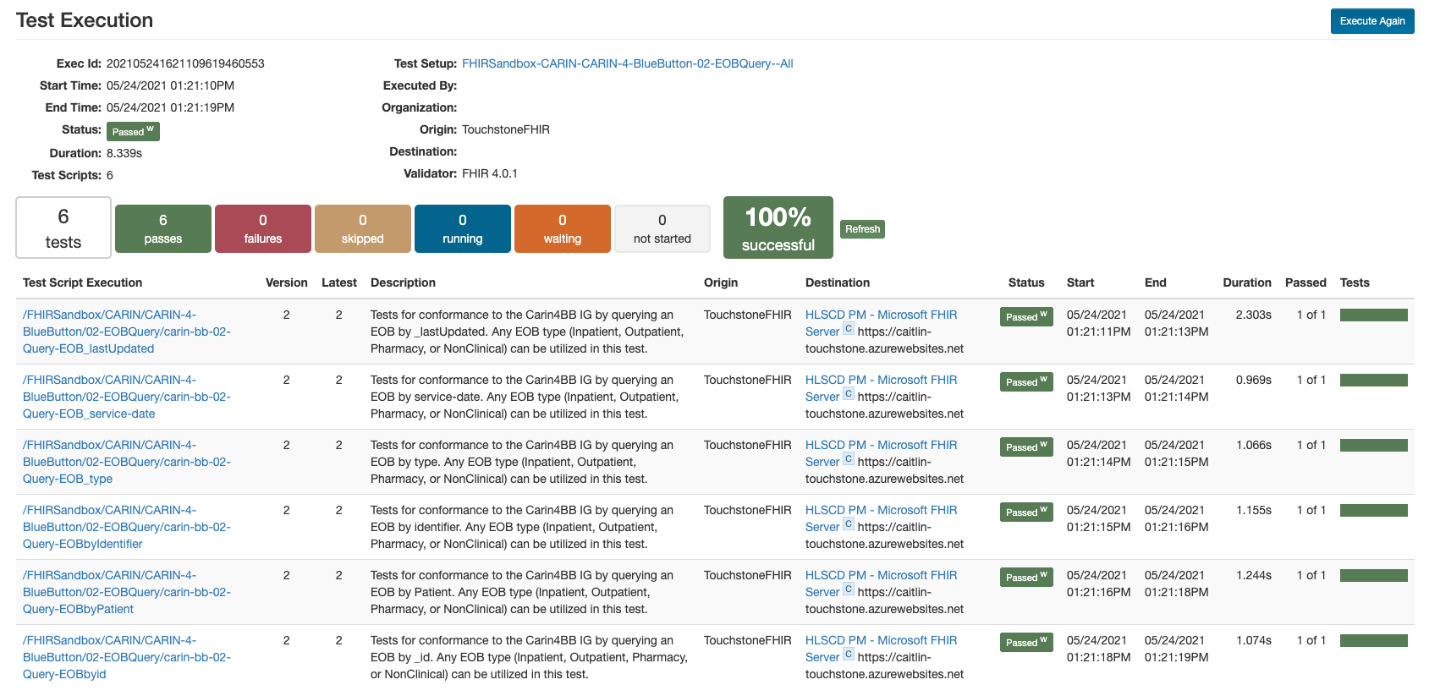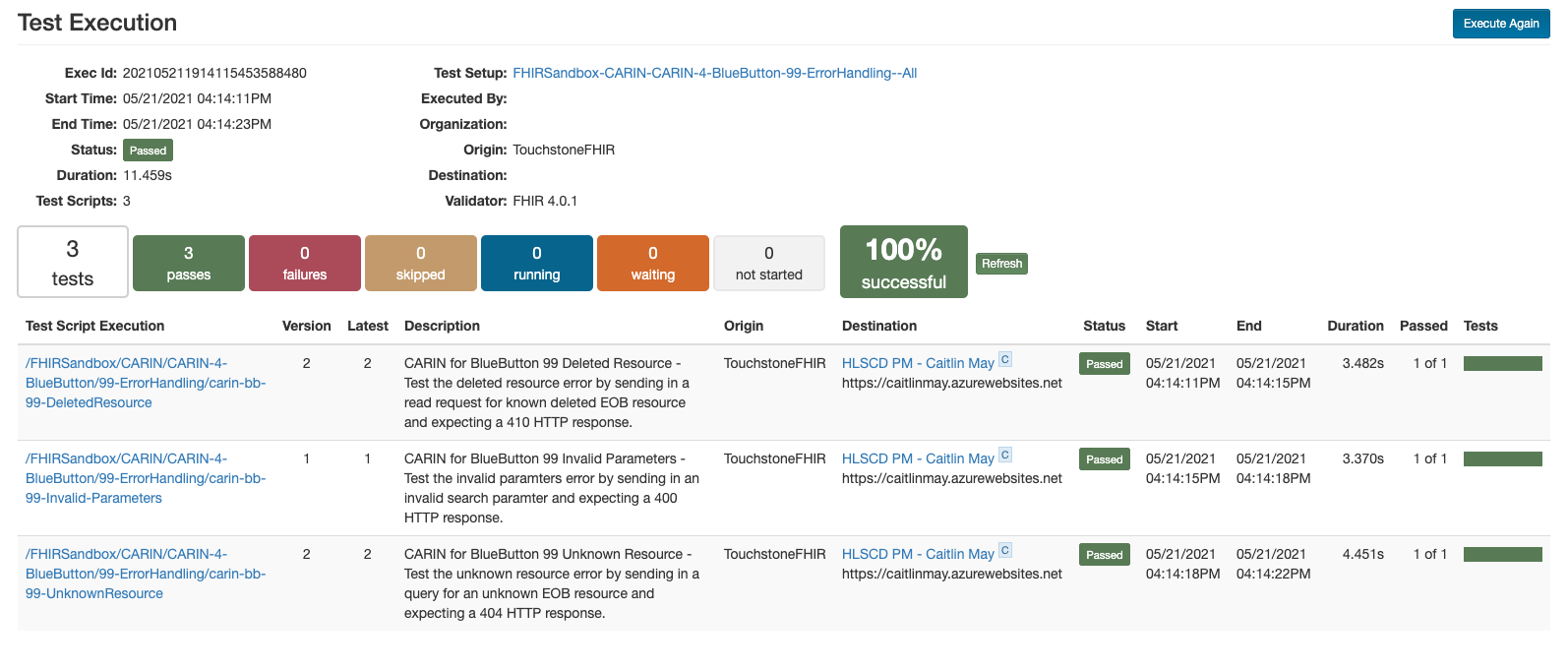CARIN Implementation Guide for Blue Button® for Azure API for FHIR
Important
Azure API for FHIR will be retired on September 30, 2026. Follow the migration strategies to transition to Azure Health Data Services FHIR® service by that date. Due to the retirement of Azure API for FHIR, new customer deployments won't be allowed beginning April 1, 2025. Azure Health Data Services FHIR service is the evolved version of Azure API for FHIR that enables customers to manage FHIR, DICOM, and MedTech services with integrations into other Azure services.
In this tutorial, we walk through setting up Azure API for FHIR® to pass the Touchstone tests for the CARIN Implementation Guide for Blue Button (C4BB IG).
The first test we focus on is testing Azure API for FHIR against the C4BB IG capability statement. If you run this test against Azure API for FHIR without any updates, the test fails due to missing search parameters and profiles.
As part of the C4BB IG, you need to define three new search parameters for the ExplanationOfBenefit resource. Two of these are tested in the capability statement (type and service-date), and one is needed for _include searches (insurer).
Note
In the raw JSON for these search parameters, the name is set to ExplanationOfBenefit_<SearchParameter Name>. The Touchstone test is expecting that the name for these will be type, service-date, and insurer.
The rest of the search parameters needed for the C4BB IG are defined by the base specification and are already available in Azure API for FHIR without additional updates.
Outside of defining search parameters, the other update you need to make to pass this test is to load the required profiles. There are eight profiles defined within the C4BB IG.
- C4BB Coverage
- C4BB ExplanationOfBenefit Inpatient Institutional
- C4BB ExplanationOfBenefit Outpatient Institutional
- C4BB ExplanationOfBenefit Pharmacy
- C4BB ExplanationOfBenefit Professional NonClinician
- C4BB Organization
- C4BB Patient
- C4BB Practitioner
To assist with creation of these search parameters and profiles, we have a sample http file that includes all the steps outlined in this tutorial in a single file. Once you've uploaded all the necessary profiles and search parameters, you can run the capability statement test in Touchstone.

After testing the capabilities statement, test the read capabilities in Azure API for FHIR against the C4BB IG. This is a test of conformance against the eight profiles you loaded in the first test. You'll need to have resources loaded that conform to the profiles. We recommend testing against resources that you already have in your database, but we also have a http file available with sample resources pulled from the examples in the IG that you can use to create the resources and test against.

The next test we review is the EOB query test. If you've already completed the read test, you have all the data loaded that you need. This test validates that you can search for specific Patient and ExplanationOfBenefit resources using various parameters.

The final test we walk through is testing error handling. The only step you need to do is delete an ExplanationOfBenefit resource from your database and use the ID of the deleted ExplanationOfBenefit resource in the test.

In this tutorial, we walked through how to pass the CARIN IG for Blue Button tests in Touchstone. Next, you can review how to test the Da Vinci formulary tests.
Note
FHIR® is a registered trademark of HL7 and is used with the permission of HL7.